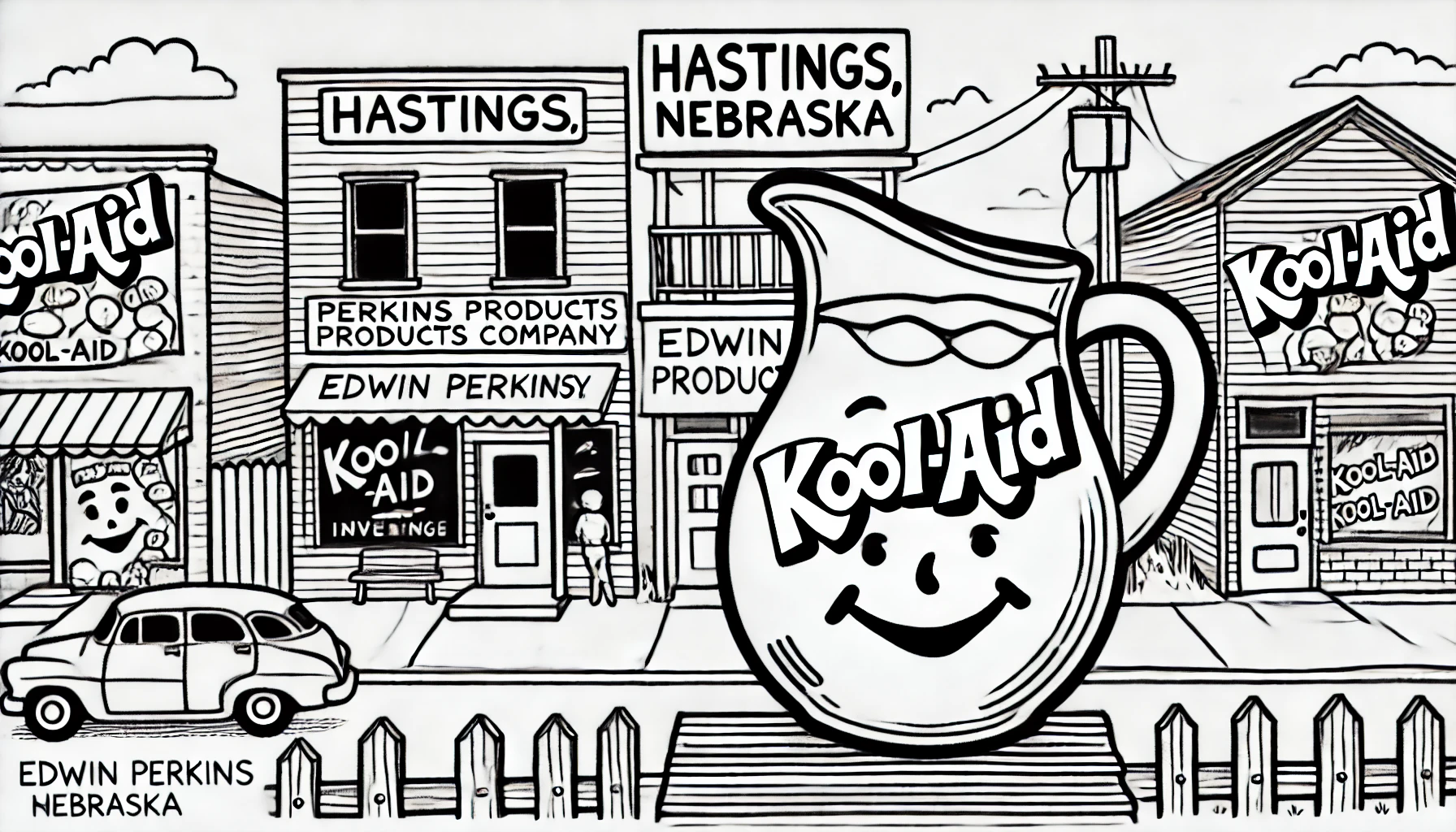Oregon Territory Formation and its Precursors in Western Expansion

Traveling through the vast expanse of Nebraska today, it is difficult to envision the complex and often conflicted history that led to the creation of the Oregon Territory. To grasp this territory's formation, it is essential to delve into the wider narrative of westward expansion, involving key players, boundary disputes, and competing interests. Established in 1848, the Oregon Territory encompassed a vast territory, including present-day Idaho, Oregon, Washington, and parts of Montana and Wyoming. Bordering Nebraska to the northwest, the evolution of the Oregon Territory played a pivotal role in shaping regional dynamics.
At the forefront of the Oregon Territory's history were competing claims and interests from the United States and Great Britain. Signed in 1818, the Convention of 1818 established a boundary between the US and British North America - specifically, the 49th parallel north. Although it marked a significant agreement, boundary disputes persisted, fueling tensions and stimulating westward expansion efforts. Notably, the Lewis and Clark Expedition of 1804-1806, funded by the US government and mapped by Clark and Meriwether Lewis, marked a pivotal moment in westward exploration, shedding light on uncharted territories that would soon become part of the Oregon Territory.
A key factor in Oregon's growth and subsequent organization was the arrival of Catholic missionaries and pioneers. In 1836, the Hudson's Bay Company representative, George Simpson, implored Catholic missionaries from Quebec to arrive at Fort Vancouver, near present-day Vancouver, Washington. An already established HBC trading post on the north bank of the Columbia River in Washington, Fort Vancouver witnessed an influx of residents during the 1840s. Catholic missions expanded, specifically near Walla Walla, Washington, attracting large groups of Native Americans to resettle and join newly founded Catholic communities.
Critical to the Oregon Territory's foundation was the role of immigrants who mainly traversed the perilous Oregon Trail. As large numbers of American pioneers opted for relocation to Oregon Country rather than settling in areas around Nebraska, clashes began to develop over territorial rights and policy. An example was the conflict over the governance of the provisional government of Oregon established in 1843. Despite criticism regarding territorial formation and growth decisions from various parties, it resulted in vital roles of defining laws, and making much-needed economic choices. Regional administration disputes arose from provisions made by the Preemption Act, notably designed to better help settle land acquisition within new pioneer territories.
A pivotal period came when the 49th parallel boundary dispute persisted between Great Britain and the US, with massive regional growth shifting American migration agendas and intensifying negotiations between Native tribes and newly found American acquisitions. Although several incidents heightened tensions with Native tribes - the Whitman Massacre, one instance being amid the confrontation over new provisions being instated by territorial U.S. policies, led American regional governors implementing acts on Native American land and reenacting those acts after key conversations with both the English monarch and US Federal authorities. The U.S. ultimately received its original southern goals signed into final protocol though known provisions under new Treaty and laws in place.
To date, historical Oregon marks no stark contrasts with unexplored Nebraska or overall western push, only vast uncharted lands largely becoming part of a great collective pursuit of pioneering knowledge. Providing greater depths of these stories show Nebraska pioneer knowledge has origins from similar states largely marking their historical contributions on newly forming relations within the great western migration period. Ushering what shaped the land and its Native populations throughout the country by keeping territorial laws and historical markers current knowledge portrays American leaders’ collective historical goals throughout the development of vast collective lands they uncovered throughout their time on the continent.
Organizing through vast Nebraska spaces calls for both historical exploration beyond one’s local and cultural knowledge base, taking ideas through centuries-old historical landscapes while understanding both U.S. growth, intercultural participation, Native population shifts, and actual new American pioneer settlers migrating lands to the region now as Oregon country has come to portray an understanding of its most profound roots established through laws instated. The Oregon territory developed through long terms of agreements beyond English colonies the original treaties shared both the British empire government and U.S. as this region grew toward recognition beyond time.
Looking through these Nebraska ties, one finds a delicate set of relations ultimately weaving deep intricacies marking major happenings behind crucial U.S. laws both allowing for territorial status, its relations deep in uncharted lands between both tribes and U.S. migration settlers. Ushering territories had vast roots not just marked between state to state but region to region depending entirely on newly forming laws as the British lost a substantial plot of native population locations inside U.S now migrating lands along with thousands of local pioneer residents living under this great Oregon movement both currently and years ago.
Throughout exploring today, Americans recognize vast periods behind specific Oregon territorial laws currently recognized as being crucial components of the U.S. migration west resulting in so much deep historical roots mainly outlined using this distinct Oregon country movement.
At the forefront of the Oregon Territory's history were competing claims and interests from the United States and Great Britain. Signed in 1818, the Convention of 1818 established a boundary between the US and British North America - specifically, the 49th parallel north. Although it marked a significant agreement, boundary disputes persisted, fueling tensions and stimulating westward expansion efforts. Notably, the Lewis and Clark Expedition of 1804-1806, funded by the US government and mapped by Clark and Meriwether Lewis, marked a pivotal moment in westward exploration, shedding light on uncharted territories that would soon become part of the Oregon Territory.
A key factor in Oregon's growth and subsequent organization was the arrival of Catholic missionaries and pioneers. In 1836, the Hudson's Bay Company representative, George Simpson, implored Catholic missionaries from Quebec to arrive at Fort Vancouver, near present-day Vancouver, Washington. An already established HBC trading post on the north bank of the Columbia River in Washington, Fort Vancouver witnessed an influx of residents during the 1840s. Catholic missions expanded, specifically near Walla Walla, Washington, attracting large groups of Native Americans to resettle and join newly founded Catholic communities.
Critical to the Oregon Territory's foundation was the role of immigrants who mainly traversed the perilous Oregon Trail. As large numbers of American pioneers opted for relocation to Oregon Country rather than settling in areas around Nebraska, clashes began to develop over territorial rights and policy. An example was the conflict over the governance of the provisional government of Oregon established in 1843. Despite criticism regarding territorial formation and growth decisions from various parties, it resulted in vital roles of defining laws, and making much-needed economic choices. Regional administration disputes arose from provisions made by the Preemption Act, notably designed to better help settle land acquisition within new pioneer territories.
A pivotal period came when the 49th parallel boundary dispute persisted between Great Britain and the US, with massive regional growth shifting American migration agendas and intensifying negotiations between Native tribes and newly found American acquisitions. Although several incidents heightened tensions with Native tribes - the Whitman Massacre, one instance being amid the confrontation over new provisions being instated by territorial U.S. policies, led American regional governors implementing acts on Native American land and reenacting those acts after key conversations with both the English monarch and US Federal authorities. The U.S. ultimately received its original southern goals signed into final protocol though known provisions under new Treaty and laws in place.
To date, historical Oregon marks no stark contrasts with unexplored Nebraska or overall western push, only vast uncharted lands largely becoming part of a great collective pursuit of pioneering knowledge. Providing greater depths of these stories show Nebraska pioneer knowledge has origins from similar states largely marking their historical contributions on newly forming relations within the great western migration period. Ushering what shaped the land and its Native populations throughout the country by keeping territorial laws and historical markers current knowledge portrays American leaders’ collective historical goals throughout the development of vast collective lands they uncovered throughout their time on the continent.
Organizing through vast Nebraska spaces calls for both historical exploration beyond one’s local and cultural knowledge base, taking ideas through centuries-old historical landscapes while understanding both U.S. growth, intercultural participation, Native population shifts, and actual new American pioneer settlers migrating lands to the region now as Oregon country has come to portray an understanding of its most profound roots established through laws instated. The Oregon territory developed through long terms of agreements beyond English colonies the original treaties shared both the British empire government and U.S. as this region grew toward recognition beyond time.
Looking through these Nebraska ties, one finds a delicate set of relations ultimately weaving deep intricacies marking major happenings behind crucial U.S. laws both allowing for territorial status, its relations deep in uncharted lands between both tribes and U.S. migration settlers. Ushering territories had vast roots not just marked between state to state but region to region depending entirely on newly forming laws as the British lost a substantial plot of native population locations inside U.S now migrating lands along with thousands of local pioneer residents living under this great Oregon movement both currently and years ago.
Throughout exploring today, Americans recognize vast periods behind specific Oregon territorial laws currently recognized as being crucial components of the U.S. migration west resulting in so much deep historical roots mainly outlined using this distinct Oregon country movement.
